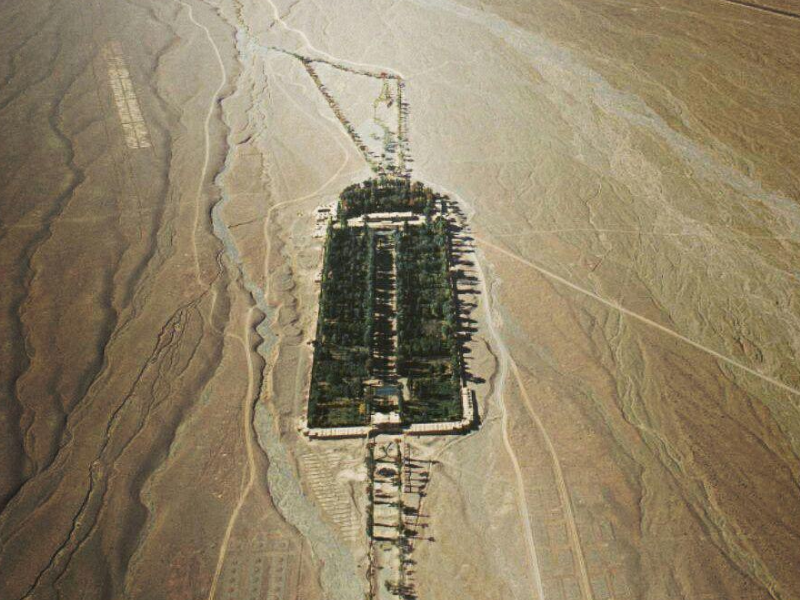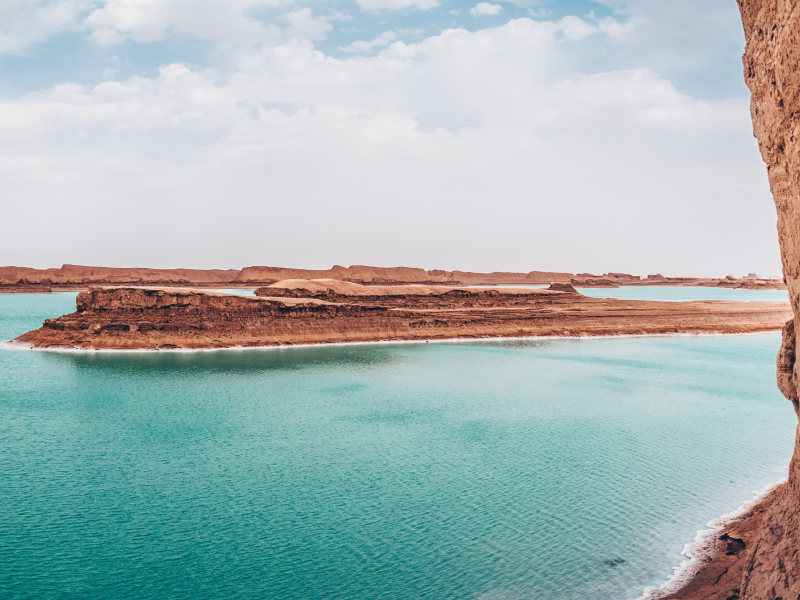What Is an Oasis in a Desert & How Does It Form?
Desert is a natural wonder that captivates visitors with its wide and quiet landscapes, distinctive geological formations, and magnificent sunrises and sunsets. Its beautiful night sky, free of light pollution, provides exceptional astronomy opportunities. Adapted flora and wildlife flourish in this harsh climate.
The breathtaking landscapes with their ever-changing patterns and towering dunes, inspire wonder. Desert exposes its profound beauty in the stillness, allowing for a greater connection with nature. Oasis in desert is another significant natural wonder that brings amazement to the mind. Let’s learn more about Oasis in Desert.
What is an Oasis in the Desert?
A desert oasis is a tiny region or place inside a desert environment where water exists, resulting in a distinct and productive ecology. It is a refuge of life and flora amid parched and desolate terrain.
Oases are usually generated by subsurface water sources, such as springs or aquifers, rising to the surface and forming pools, streams, or even tiny lakes. Water enables the creation of luxuriant flora, such as palm trees, bushes, and other plants, which attract a diversity of fauna.
Oasis in the Desert Real
A desert oasis is a rare phenomenon that provides a haven for life in an otherwise harsh and desolate area. It is distinguished by the presence of life-giving water, which nourishes lush flora and a broad range of fauna. They have also served as spiritual retreats and places of introspection.
As trade sites, oases have economic importance as well as historical and cultural significance. Oases, on the other hand, are vulnerable ecosystems that require conservation efforts to preserve their delicate equilibrium. The presence of the oasis emphasizes the endurance of life and the beauty that may develop in hostile settings.
The preservation of these oases is critical for preserving their ecological integrity and ensuring that future generations can appreciate their beauty. The oasis serves as a reminder of the interconnectedness of ecosystems, the significance of water, and nature’s and people’s capacity to adapt to difficult conditions.
Oasis in Desert Meaning
A desert oasis can have several meanings. It represents nature’s capacity to flourish in difficult situations by symbolizing life and vigor amid a hostile environment. It symbolizes hope and acts as a shelter or sanctuary, providing consolation and regeneration to weary travelers.

The oasis also represents the close relationship between humanity and the natural world, underlining the need to protect delicate ecosystems and vital resources such as water. Oases have played an important role in human settlement, commerce, and civilization development, expressing the legacy and customs of the cultures that have inhabited them.
Furthermore, an oasis can have a metaphorical connotation within oneself, reflecting inner calm and harmony amid life’s difficulties. Overall, Oasis in the Desert can have various metaphorical implications that include life, hope, connection, history, and personal well-being.
How are Oasis formed in the desert?
Desert oasis formation is caused by a mix of geological and hydrological processes. They are most commonly formed by subterranean water sources such as aquifers or springs. Water percolates through permeable rock strata until it reaches an impenetrable layer, at which point it rises to the surface and forms an oasis.
Tectonic activity and faults can also help to generate oases by allowing water to reach the surface. Human action, such as digging, can generate localized oases where water is accessible for cultivation and settlement in some situations.
The presence of water in an oasis promotes the growth of flora and attracts wildlife. They are dynamic habitats that can fluctuate in size and location over time as water supply and geological processes change.
How many Oases in the Desert
Oases can range from small, isolated pockets of water and plants to huge, linked systems. Oases can also emerge and dissipate over time owing to changes in water supply and geological conditions. It is believed that there are thousands of oases distributed over various deserts across the world.
Some well-known examples are the Siwa Oasis in Egypt, the Bahariya Oasis in Egypt’s Western Desert, the Al-Hasa Oasis in Saudi Arabia, the Timia Oasis in Niger, and the Tozeur Oasis in Tunisia. These are only a few of the countless oases located across the world’s deserts.
Oasis in Desert Facts
Within the surrounding desert, oases generate distinct microclimates. Water and vegetation may drastically reduce temperatures and boost humidity, presenting a sharp contrast to the parched environment just a short distance away.
Many oases include palm trees as a defining characteristic. These trees not only give shade, but they also produce vital resources such as dates, which have long been a staple meal in arid regions.
Water flowing through the oasis delivers minerals to the soil, enriching it and making it productive for agriculture. This enables oasis people to develop crops and earn a living in an otherwise hostile environment.

In arid areas, oases serve as essential animal refuges. They attract a wide variety of wildlife, including migrating birds, reptiles, and animals that rely on the oasis for water, food, and shelter.
Traditional oasis communities may have different building styles. Natural cooling is provided by characteristics such as narrow streets, wind towers, and courtyards that optimize shade and air movement.
Oases are well-known for their beautiful gardens, which feature a wide range of plants and flowers. These gardens are meticulously tended, with ancient irrigation techniques like qanats or falaj used to efficiently distribute water.
Plant and animal species found nowhere else in the world can call oases home. Over time, these indigenous species have adapted to the unique circumstances of the oasis ecosystem.
Oases are not static entities. They can shift in size and location over time due to factors such as changes in water availability, climate variations, and human intervention.
Oasis in Desert, A Tourism Attraction
Oases have become famous cultural tourist attractions. Ecotourism options are offered in oases, allowing tourists to observe varied ecosystems and engage in environmental exploration. An oasis in the desert can be a natural wonder, and visiting an oasis is highly recommended for those who want to experience adventure tourism activities.
Visitors can embark on camel treks, 4×4 desert safaris, or hiking expeditions to explore the surrounding desert landscapes.
Final Words
The natural splendor of the oasis, with its lush flora and glittering water bodies, stands in stark contrast to the parched desert surroundings. It offers a break from routine and a trip into another universe.
We may learn about the cultural and historical significance of the oasis while also connecting with nature’s resilience. An oasis in the desert is a peaceful location and provides opportunities for personal contemplation and growth.
Finally, viewing an oasis amid the desert is a transforming experience that provides a tremendous respect for the natural world’s beauty.
Are you planning to travel to Iran and looking for an Iran resort? Consider Matinabad Eco-resort.





Leave a Reply
Want to join the discussion?Feel free to contribute!